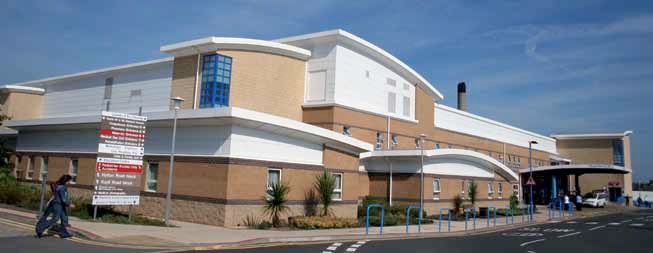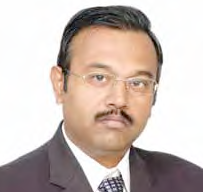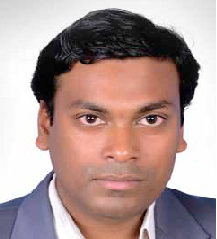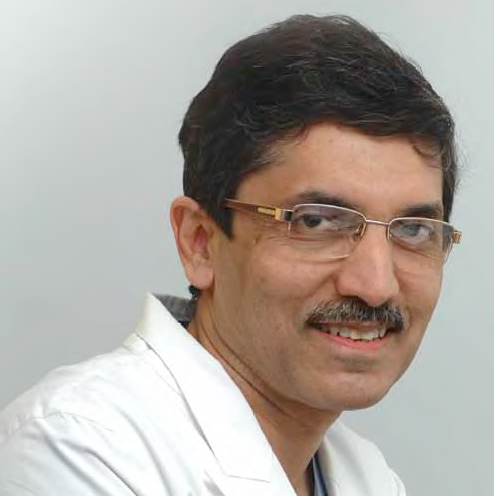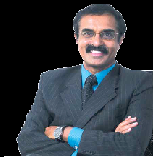
 Dr Rajesh Garg,
Dr Rajesh Garg,
Director and HOD, Neurology,
Paras Hospitals, Gurgaon
Technological advancements have boosted neuroscience. Dr Rajesh Garg, Director and HOD, Neurology, Paras Hospitals, Gurgaon, shares his views with Shahid Akhter

The mysteries of the brain continues to elude us. We are still squinting in the primitive ages as far as brain is concerned

Please give an overview of neurology and neurological disorders in India ?
Neurology is growing at a slow pace but certainly the scope has widened and diversified. Today there are around 1,000 qualified neurologists in India. Advanced imaging, electrodiagnostic investigations, improved blood tests and other technological breakthroughs have paved the way for enhanced diagnostic accuracy ,leading to better understanding and treatment of neurological disorders.

Headaches are so universal and a good many triggers are there. How do you ascertain the cause and determine the cure?
Headache is very common and it comes in a diverse variety. There are hundreds of diagnostic headache categories. This pain is the outcome of interaction between the brain, blood vessels and the surrounding nerves. The causes, again, are simply countless. The pain may be due to a simple blow or injury, or may emerge as an outcome of illness, infection or other conditions that may precipitate a pain. Add to this, environmental factors, lifestyle and the maze of chemicals surrounding us. Once a correct diagnosis is made, the treatment plan is conveniently chalked out. It all begins with the case diary which makes it easier for the neurologist to decode the headache and arrive at a conclusion.

What is epilepsy? Are there any statistics on the numbers of Indians suffering from this disorder ?
The prence rate of epilepsy is about 5 per 1,000 in India. However, due to lack of neurologists and the stigma attached to it, there are many who prefer to hide it rather than come foward for treatment. Many think it is supernatural and treatment is neither required nor possible. However, these myths need to be dispelled and people who witness successful treatments feel encouraged to seek medical advice. Epilepsy or seizure disorder is a condition affecting the nervous system. An epileptic seizure results from a sudden electrical outburst in the brain that leads to a changed pattern by way of behaviour, consciousness movement or sensation. Drugs are capable of controlling 70 percent of people with epilepsy. At times, surgery is the solution and some neurologists combine surgery with medication.
How common is Parkinsons Disease in India ?
Age related prence of Parkinsons in India is around 70 per 100,000. Compared to the West, Parkinsons disease in India is relatively less. However, in days to come when the aging pattern of the Indian population changes, there may be greater number of those affected. The symptom begins when more than 50 to 80 percent of dopamine neurons have died. There are a variety of triggers but it is widely accepted that genetics and environmental factors merge to set the disease in motion. Drugs and surgical procedures (deep brain stimulation)are the two options for Parkinsons disease. In deep brain stimulation, the neurosurgeons implant electrodes into a specific part of the brain.
What are some of the latest approaches to treating stroke ?
The average stroke rate in India is around 150 per 1,00,000 which is similar to the developed nations. Ischemic strokes account for more than three fourths of the strokes in India. The worst damage that can happen from a stroke occurs within three to four hours. Fast and early treatment is the need of the hour. First it needs to be ascertained if the stroke is ischemic (blocking an artery) or hemorhagic ( involves bleeding into the brain).
How do you resolve the medical and ethical dilemma in brain death?
According to The Transplantation of Human Organs Act, 1994, Deceased person is defined as a person in whom permanent disappearance of all evidence of life occurs, by reason of brainstem death or in a cardio-pulmonary sense at any time after live birth has taken place. Further, it goes on to state that brain-stem death suggests the stage at which all functions of the brain stem have permanently ceased. Once brain-stem death has been diagnosed by an authorised team using specified criteria, the dead persons organs can be removed for transplantation provided legally valid consent for this is available.
Please tell us about the team of doctors at the Neurosciences in Paras Hospital?
We are a team of five neurologists, each specialising in one aspect of neurology and focused for appropriate approach in his respective field. The highly skilled team of neurosurgeons, neurologists, neuroanesthetists, neuro radiologists, psychiatrists and experts in critical care work in tandem to provide the best possible healthcare services.
How different is the Neuro ICU at Paras Hospital?
The ten-bedded Neuro ICU, stroke unit, is equipped with latest ventilators, monitors & defibrillators and is manned 24×7 by Neurointensivists. There is a facility of continuous monitoring of brain function and vital parameters with the stateof- art equipments.
Be a part of Elets Collaborative Initiatives. Join Us for Upcoming Events and explore business opportunities. Like us on Facebook , connect with us on LinkedIn and follow us on Twitter , Instagram.
"Exciting news! Elets technomedia is now on WhatsApp Channels Subscribe today by clicking the link and stay updated with the latest insights!" Click here!






